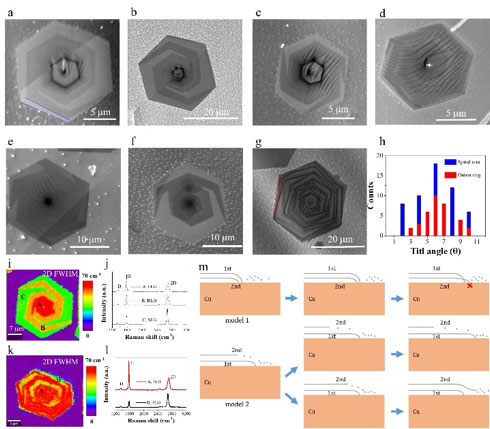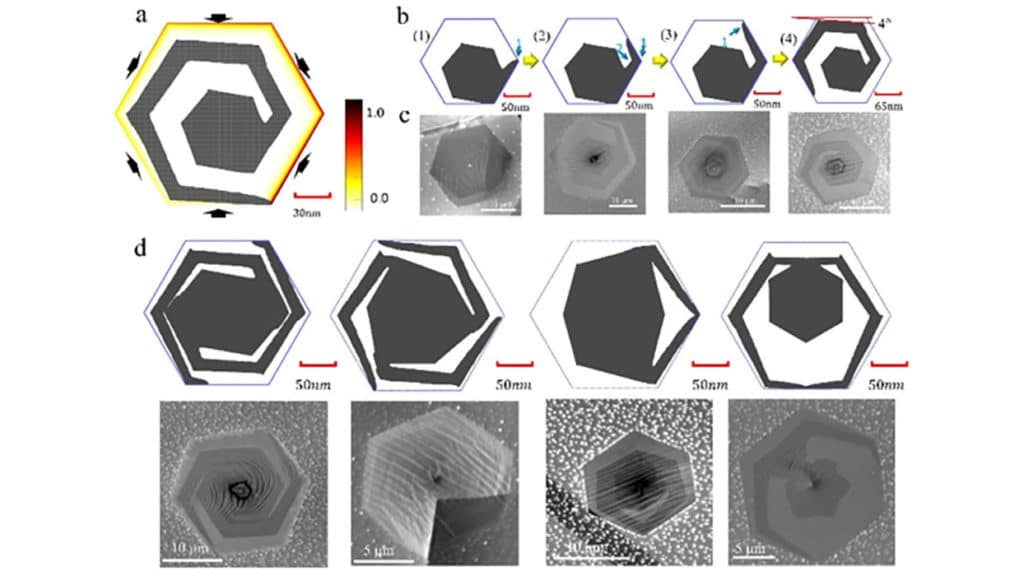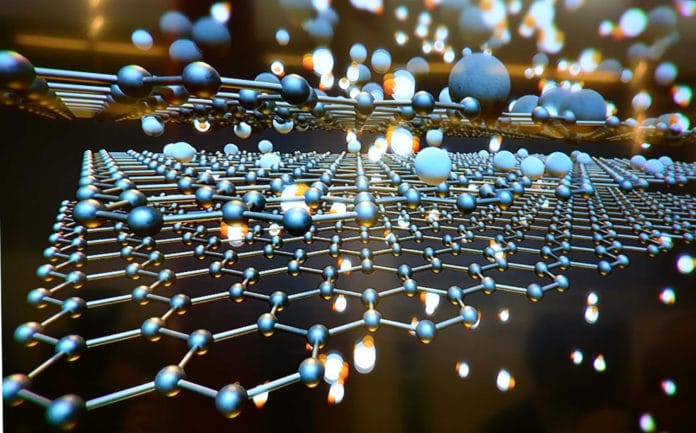Until now, the discovery of new materials and the development of materials highly depends on the experiences gained by many experimental tries and thus are very time-consuming. Controllable materials design and synthesis guided by theories can substantially speed up the discovery and development of new materials, a long-held desire of scientists and engineers. Still, because of limited understanding of the mechanisms of materials synthesis, it has never been fully realized.
A new study by the scientists from the UNIST suggested a new way to demonstrate an example of the controllable synthesis of graphene via a theoretical understanding of the growth mechanism. The study could pave the way for the fast synthesis of better materials in the future guided by theoretical study.

They synthesized a series of multilayer spirals or spiral sharped graphene arms beneath hexagonal graphene islands. The graphene spirals have features as:
- Add-layer graphene grown beneath a graphene hexagon.
- May have 1, 2, 3, 4, 5, 6 spiral-shaped arms.
- The tip of a spiral graphene arm is always in contact with the edge of the first hexagonal graphene layer.
The formation of spiral-shaped materials has never been observed in other materials before, and as a result, no traditional theory of materials can explain it. Furthermore, the observation of graphene spirals reveals a distinct difference in the growth of first and second-layer graphene. A thorough theoretical understanding of this difference could lead to a solution for thickness controllable graphene growth, a long-term solution vexing problem in graphene synthesis.
Scientists could simulate spiraled graphene growth using a kinetic Monte Carlo (kMC) method and reveal the growth mechanism of the spiral graphene adlayer structure after rigorous experimental characterizations of the generated materials and theoretical efforts.
The kinetic Monte Carlo simulation perfectly reproduced all these observations and provided an intuitive picture of the growth mechanism.

Dr. Xiao Kong, the first author of the paper, said, “The growth of graphene adlayers in the form of spiral shape is due to the limited carbon precursor diffused from the edge of the first graphene layer. If the amount of carbon precursors beneath the first graphene layer is not enough to grow a complete graphene layer, the adlayer graphene will cover a fraction of the beneath area with a specific pattern, such as the observed spiraled graphene arms. The concentration of the precursors is higher at the edge of the first layer of graphene. Thus, the tip of a graphene spiral is always attached to the edge of the first graphene layer to scavenge the precursors diffused from the edge of the first layer graphene.”
“The growth mechanism helps us understand the role of carbon precursor feeding graphene growth. If we can control the feeding of carbon precursors during graphene growth, we should be able to control the thickness of graphene precisely. Therefore, our results thus provide a new way to the controllable growth of multilayer graphene.”
Scientists used high-resolution transmission electron microscopy to characterize the samples. This offers vital information of the graphene spiral structure and leads to a complete theoretical understanding of the growth mechanism.
Journal Reference:
- Haibin Sun, Xiao Kong, Hyoju Park, et al., “Spiral Growth of Adlayer Graphene,” Advanced Materials, (2022). DOI: 10.1002/adma.202107587
